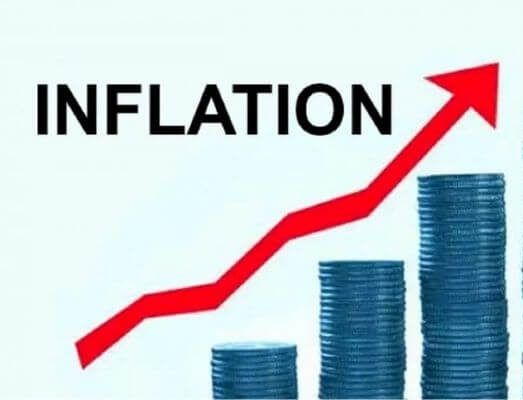Zambia’s annual inflation rate has risen to 12.9 percent in November due to price movements of selected food and non-food items.
This is as the country recorded K1.0 billion trade deficit.
The annual inflation for November 2023, increased to 12.9 percent from 12.6 percent recorded in October 2023, Zambia Statistical Agency (ZamStats) Statistician General, Mulenga Musepa, said.
This means that on average, prices of goods and services increased by 12.9 percent between November 2022 and November, 2023.
Addressing journalists in Lusaka on Thursday, Musepa said that annual food inflation for November, 2023 was recorded at 13.7 percent compared to 13.6 percent the previous month.
This, he said, meant on average prices of food items increased by 13.7 percent between November 2022 and November 2023.
Musepa noted that the outturn was mainly attributed to price movements in cereals (Samp, cassava meal, maize grain, and rice), fish, groundnuts and beans.
He said annual non-food inflation for November was recorded at 11.8 percent compared to 11.3 percent the previous month.
This development was mainly attributed to increases in prices of non-food items such purchase of motor vehicles, fuel, transport fair, spare parts and accessories.
He said that of the overall 12.9 percent annual inflation, food and non-alcoholic beverages group contributed 7.9 percentage points, while non-food items accounted for 5,0 percentage points.
“Of the 5.0 percentage points, transport contributed the highest at 2.1 percentage points followed by housing, water, electricity, gas and other fuels at 0.9 percentage points, clothing and footwear, furniture, household equipment and routine household maintenance at 0.7 and 0.6 percentage points, respectively,” Musepa said.
He added that the rest of the non-food group accounted for the remaining 0.7 percentage points.
Musepa indicated that Lusaka province contributed the highest at 4.1 percentage points to the overall annual inflation of 12.9 percent in November 2023.
Copperbelt and Central provinces contributed 2.5 and 1.4 percentage points respectively.
He said Southern provinces contributed 1.3 percentage, while North-western province had the lowest contribution of 0.4 percentage points.
On trade, Musepa reported that cumulative total trade for the period January to October 2023 was K336.7 billion, while that of 2022 for the same period was K290.2 billion, representing a 16.0 percent increase.
“The total value of exports via all modes of transport for the period January to October 2023 was K171.4 billion. Road transport accounted for highest K82.0 billion representing 47.8 percent share.
“Rail transport was second at K7.2 billion and air transport was third accounting for K3.6 billion, while other modes accounted for K78.6 billion,” he said.
The total value of imports via all modes of transport for the period January to October 2023 was K165.3 billion.
Musepa said road transport was the highest at K94.2 billion representing 57.0 percent followed by air transport at K7.8 billion.
He said rail transport was third at K2.7 billion accounting for 1.6 percent of the total import bill.
Other modes of transport, he noted accounted for K60.6 billion.
In terms of volumes, Musepa said a total of 5.9 million tonnes of imports was recorded for the period January to October 2023, of which road transport accounted for 3.5 million tonnes, representing the highest share at 59.0 percent.
He said railway transport accounted for 230.8 thousand tonnes, representing a share of 3.9 percent in the period under review.
He added that Zambia recorded a trade deficit of K1.0 billion in October 2023 compared to a deficit of K0.8 billion in September,2023.
“Exports mainly comprising domestically produced goods, decreased 8.0 percent to K15.8 billion in October 2023 from K17.2 billion in September 2023,” Musepa noted.
This was mainly on account of 10.5, 11.2 and 31.4 percent decreases in export earnings from Intermediate goods, raw materials and Capital goods respectively.
He said imports increased by 6.1 percent to K16.8 billion in October 2023, from K17.9 billion in September 2023, and that this was mainly as a result of 19.6, 7.1 and 4.0 percent decrease in import bills of consumer goods, capital goods and raw materials, respectively.
WARNING! All rights reserved. This material, and other digital content on this website, may not be reproduced, published, broadcast, rewritten or redistributed in whole or in part without prior express permission from ZAMBIA MONITOR.












Comments